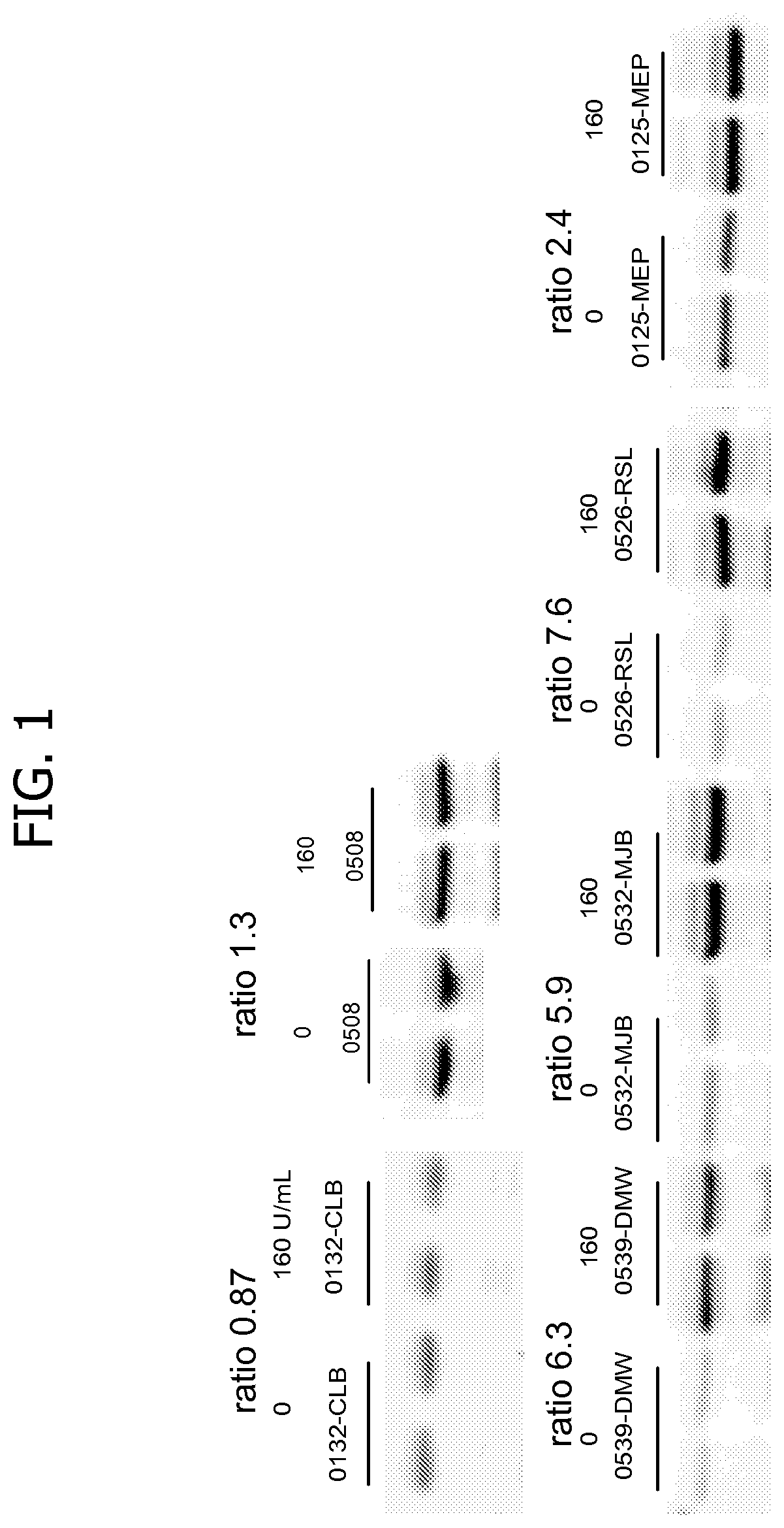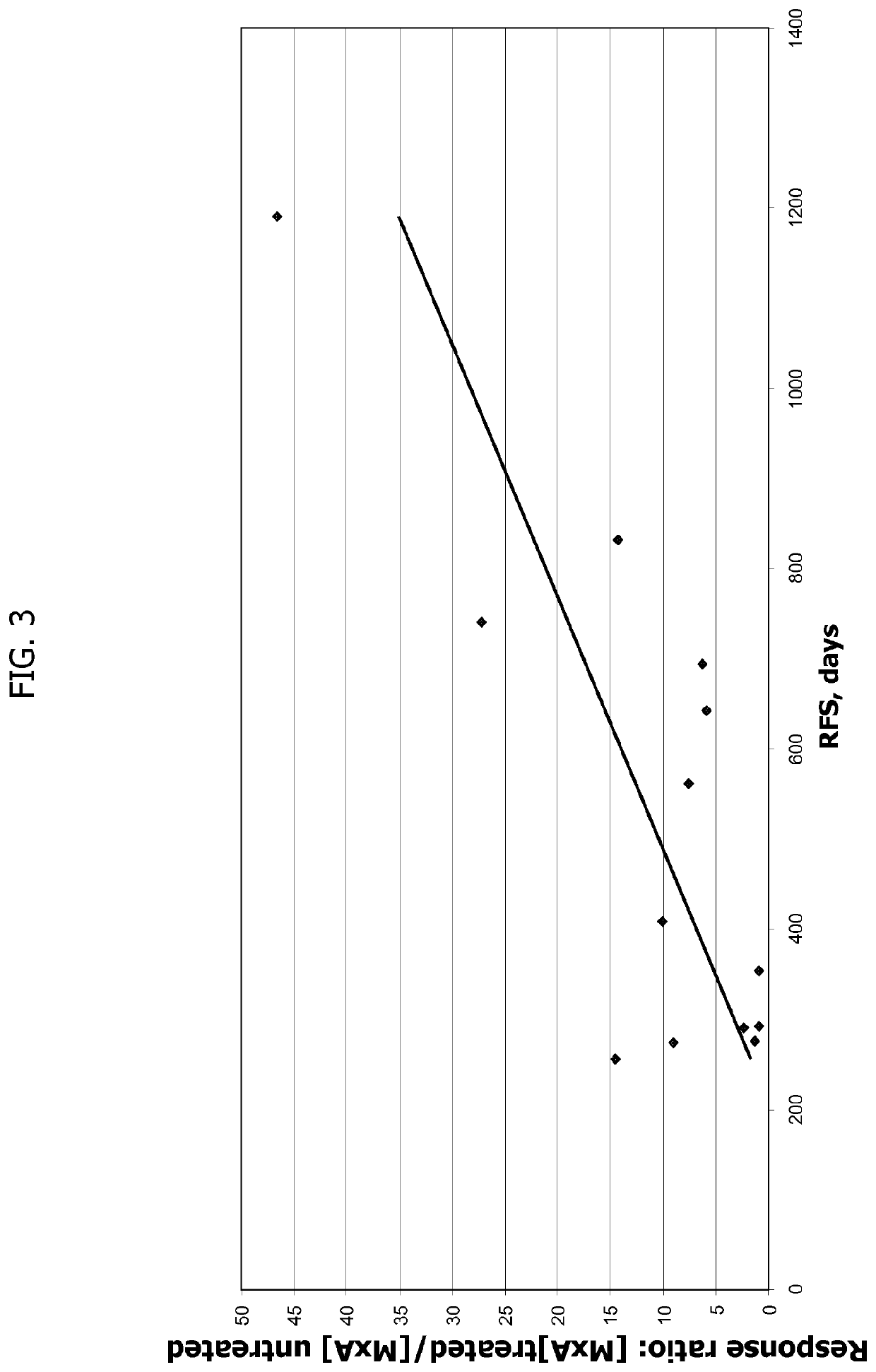Yeast-based immunotherapy and type I interferon sensitivity
- Summary
- Abstract
- Description
- Claims
- Application Information
AI Technical Summary
Benefits of technology
Problems solved by technology
Method used
Image
Examples
example 1
[0191]The following Example shows that responders in a pancreatic cancer clinical study treated with a yeast immunotherapy expressing mutated Ras were either sensitive or resistant to type 1 interferon (T1IFN), which correlated with outcome.
[0192]Measuring T1IFN Sensitivity Using Human Subject Clinical Samples:
[0193]Signaling emanating from a T1IFN ligand initiates the activation of transcription factors that activate or repress T1IFN regulated genes that encode effector proteins. The present inventors adapted an approach developed by Feng et al., 2012, supra to measure the T1IFN induced M×A protein. More particularly, the present inventors first developed the assay using PBMCs from healthy volunteers in order to confirm that the M×A protein signal did not erode when samples were frozen and thawed, since the Feng et al. analyses were performed from freshly isolated PBMCs. By assaying each individual rather than pooling blood samples, it was observed that subjects had different sensi...
example 2
[0204]The following Example provides additional evidence that T1IFN-sensitivity correlates with overall survival and recurrence free survival in a statistically significant manner in subjects treated with yeast-based immunotherapy.
[0205]In this example, in order to examine the relationship between T1IFN-sensitivity and clinical outcome in a larger cohort of subjects, the T1IFN response of GI-4000 pancreas cancer subjects was again determined in pre-treatment (baseline) PBMC samples, using those subject samples described in Example 1 above, as well as additional samples from other GI-4000-treated subjects (i.e., subjects receiving the yeast-based immunotherapy known as GI-4000 plus gemcitabine) from the same clinical study. In addition, samples from a cohort of subjects from the same clinical study who were treated with placebo (i.e., placebo plus gemcitabine) were tested to determine whether T1IFN-sensitivity correlated with clinical outcome in these patients (i.e., to determine whe...
PUM
| Property | Measurement | Unit |
|---|---|---|
| pH | aaaaa | aaaaa |
| pH | aaaaa | aaaaa |
| pH | aaaaa | aaaaa |
Abstract
Description
Claims
Application Information
 Login to View More
Login to View More - R&D
- Intellectual Property
- Life Sciences
- Materials
- Tech Scout
- Unparalleled Data Quality
- Higher Quality Content
- 60% Fewer Hallucinations
Browse by: Latest US Patents, China's latest patents, Technical Efficacy Thesaurus, Application Domain, Technology Topic, Popular Technical Reports.
© 2025 PatSnap. All rights reserved.Legal|Privacy policy|Modern Slavery Act Transparency Statement|Sitemap|About US| Contact US: help@patsnap.com



